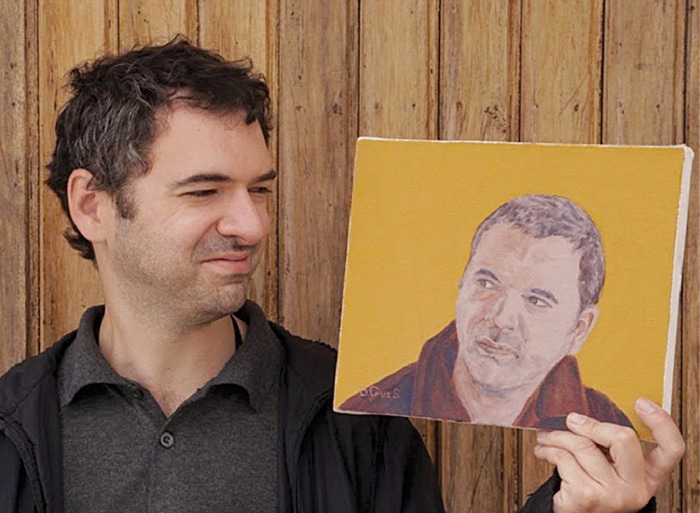Imagine being able to print your metal parts at your place without requiring any expensive machining tools. A Chile based inventor, Agustin Cruz, has developed a working prototype of a low-cost metal 3D printer, thus accelerating innovations and reducing barriers to scientific research

To democratise science and accelerate research and innovations in the lower-income societies, Agustin, an electrical engineer with over ten years of experience in building laser machines, robots, laboratory equipment, and many other exciting tools, decided to build a 3D metal printer. “3D metal printing is an impactful tool and making it more accessible will democratise science and engineering and empower people. This low-cost hardware will be able to accelerate innovations and lower barriers to scientific research,” says Agustin, when asked about his motives behind investing time and resources in this project.
3D printers that use a plastic filament are common these days. They are cost-effective and convenient for rapid prototyping, especially during the proof-of-concept phase. But when asked what advantages 3D metal printers offer over regular printers, Agustin says, “Regular 3D printers are used to make plastic objects, which are good for prototypes and specific applications, whereas 3D metal printers work with titanium powder, stainless steel powder, aluminium alloys, and other alloys. So, if you need a durable, strong part that is resistant to high temperatures, regular printers are definitely not the best choice.”
A metal 3D printer is a machine capable of making intricate metal parts. Unlike the other metal fabrication processes, like CNC and lathing, which are based on subtractive manufacturing, metal 3D printing is an additive manufacturing process that reduces the amount of wastage of materials. The printer works by depositing powdered metals and sintering them to form a 3D object. With R&D for more than five years, Agustin has developed a 3D printer that uses an electron beam for sintering the metal powder.
“The most important technical challenges are already 70% solved. The functional prototype is composed of a vacuum chamber made of stainless steel, a vacuum pump system, an electron gun, high voltage power sources, electrical connections, cooling systems, sensors, among others,” says Cruz “This printer uses an electron beam to selectively melt each layer of metal powder, causing the powder particles to fuse. After one layer is completed, the build platform is moved down one layer in height. The re-coater comes in again with a fresh layer of powder, and the electron beam starts to induce the fusion of powder particles, causing the new layer to form. This process is repeated until the entire part is finished, making a solid metal part.”

Cruz believes that to keep the metal printer accessible for all, it is necessary to utilise open source hardware and software. “This 3D metal printer will use an already available open source 3D printing software—like Cura, Slic3r, and others—and the hardware algorithm is programmed in Arduino boards to make it easier to modify and distribute by anyone,” he says.
Agustin expects that his tool will not only help innovators but people from all walks of life. It can be extremely useful in hospitals in remote locations. “3D metal printing will be practical when supplies run low in hospitals located away from major cities. For example, patients from the nearby fields who come in with work-related injuries could be outfitted with custom splints that are custom printed as needed,” says Cruz. “We also find that entrepreneurs will benefit from this project, especially early-stage entrepreneurs that are not yet financially secure enough to easily afford a consumer 3D metal printer. Increasing access for these entrepreneurs ensures greater representation and impact, paving pathways to get these deep-tech innovations more efficiently into the market.”
Currently, Cruz is working full-time in the development of this metal 3D printer, which, according to him, is an extremely resource-intensive job, Hence, he plans to open the project to the community and jump on the crowdfunding bandwagon.












